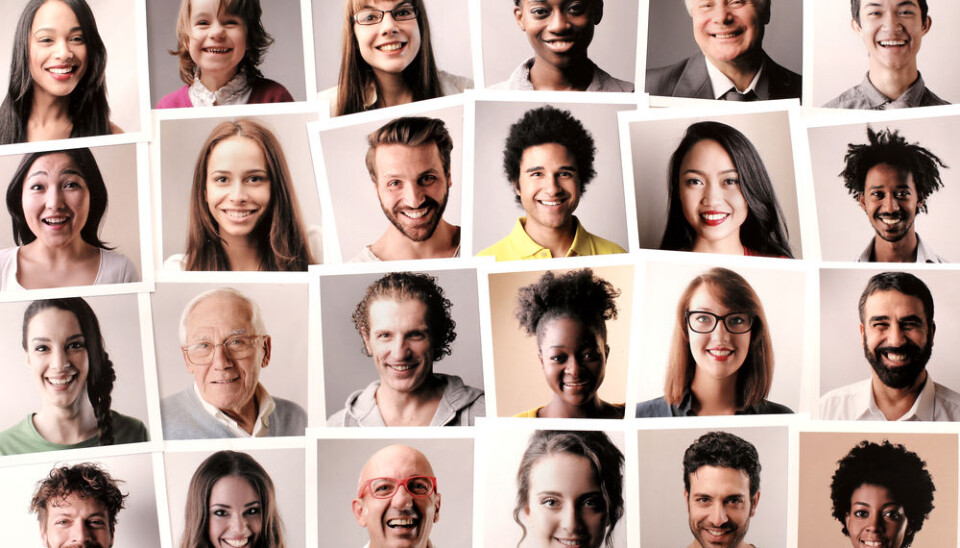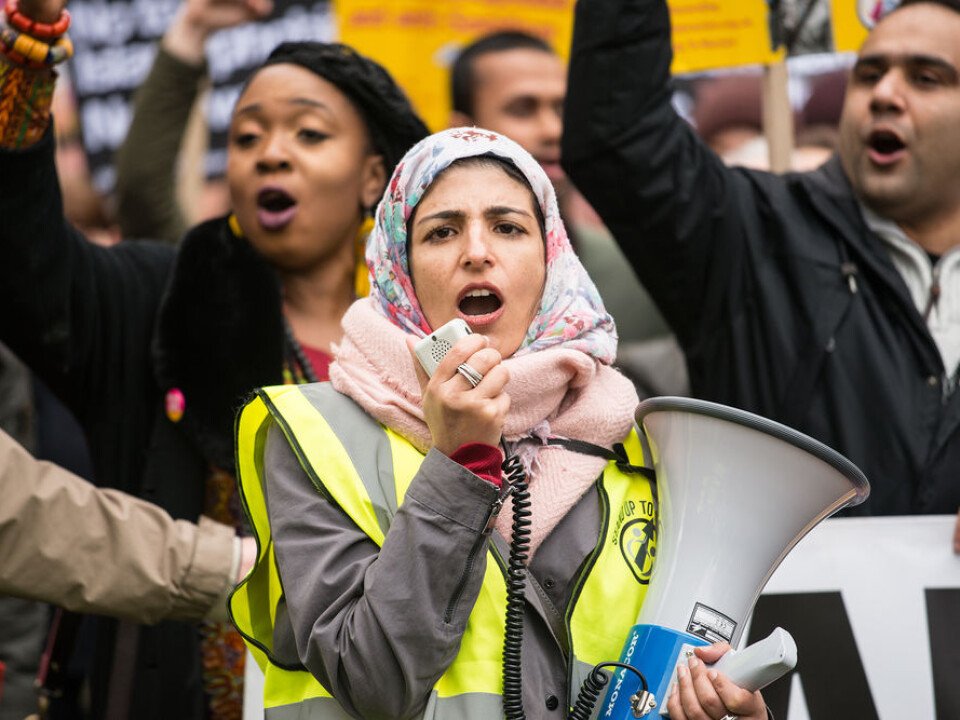
Diversity leads to greater social coherence and well-being
Diversity makes us all more open-minded, both in our communities and at work.
Can diversity be a source of team prosperity at work, or does it just lead to conflict? Do new colleagues from the other side of the world induce new social dynamics and provide a fresh way of looking at things? Or do cultural differences drive a wedge between the team?
Recent research into team diversity has led to conflicting results. While some studies show that cultural diversity is beneficial as it promotes a broader range of task-relevant knowledge, skills, and abilities (here, here, and here), others have concluded that it is a source of conflict, power imbalances, and dysfunctional group dynamics (here, here, and here).
The reason for these apparent disagreements, could be that the degree of diversity is rarely addressed. Many teams that have been studied and measured by their types of diversity have less than 15-20 per cent representation of demographic minorities.
This means that how the very composition of the team – the extent to which cultural, gender, age, or other types of diversities are present in the team – influences team dynamics is often missing from the current debate.

We decided to dig deeper into the social dynamics of highly diverse teams, to see what we could learn from a large private company in Denmark.
Read More: Diversity supports healthy economies and democracy
New research into diversity in a modern company
We studied a highly diverse company, ISS, which has more than 118 nationalities represented among their 7,200 employees. Half of them have a non-Danish background.
Drawing on examples from observations and interviews with team leaders and members in over 30 teams from the cleaning and catering section, our research reveals a virtuous circle between diversity and positive group dynamics of mutual assistance and increased team coherence.

In particular, we saw that a high numerical representation of diversity in teams – also referred to as ‘super-diversity’ – can increase the potential for interaction, boost social cohesion among co-workers, and improve well-being at work.
This agrees with research that goes back to the 1970’s, when it was first shown that moving beyond a certain diversity threshold in the team can positively impact all group members by allowing them equal opportunity to influence team dynamics and group behaviour.
The results are published in a number of studies as part of a post-doctoral research program at Copenhagen Business School, Denmark.
Read More: The economic effects of restricting immigration – lessons from US history
What exactly is super-diversity?
Back in 2007, the social anthropologist Steven Vertovec coined the notion of super-diversity to describe the social and demographic development in Britain, especially in urban areas.
Super-diversity, he said, describes the ‘diversification of diversity,’ highlighting three connected aspects:
- Changing population configurations arising from global migration flows over the past thirty-odd years
- Diverging patterns of gender and age
- And the change in migrants’ human capital (education, work skills, and experience).
Read More: How to succeed with managing cultural diversity
How is super-diversity different to diversity?
Until this 2007 study, most research on societal impact of migration and diversity had demonstrated a clear link between ethnic diversity and declining social trust and coherence. Diversity was documented to prompt citizens to withdraw from collective life and distrust their neighbours, sticking to their own ethnic communities.
However, these studies looked only at communities dominated by two well-consolidated ethnic groups, also referred to as old-diversity patterns. But what about more diverse communities?
Unlike the old diversity areas, super-diverse communities share many more positive attachments across ethnic and cultural differences. This is because the residents in super-diverse neighbourhoods cannot simply categorise strangers into one of two camps—their own or the ‘other.’
The extreme variation of cultural identities and individual life trajectories means that any assumptions they might make about the other group, are likely be inaccurate. The specific nature of cultural otherness thus remains unpredictable. As two British anthropologists recently wrote: (Mintchev and Moore, 2018: 130)
“Here, pathways to prosperity have little to do with ethnic homogeneity because the social divisions that define everyday life are not organised along ethnic lines, but along other forms of difference [that] cut across ethnicity.”
Read More: Immigrants help Norwegian companies to think differently
More diversity leaves less to room to discriminate
Our research shows that the exact same principle applies when we are at work.
Just as the residents in super-diverse neighbourhoods were unable to categorize the ‘other,’ members of super-diverse teams in our study were equally unable to categorise colleagues in clearly defined ethnic sub-groups.
The density of differences in relation to age, gender, ethnicity, national background, culture, language, educational background, work experience, or time in Denmark or at the organisation, is simply too vast. They are too diverse to be prejudiced.
Super-diversity makes them prone to socialise and collaborate beyond and across ethnic and cultural barriers.
This is the complete opposite to what we typically see in teams dominated by one or two ethnic or national identities, where the team often splits up into smaller ethnic enclaves, governed by culturally defined norms and values to the detriment of collaboration and democratic decision-making.
Read More: Is our sense of community weakened by increased immigration?
Diversity nurtures social coherence
Indeed, social coherence in the super-diverse teams in our study was nurtured due to diversity – not despite of it. Let me give you some examples.
Members of super-diverse teams describe their differences as an asset:
“We are ‘mixed spices’ and we come from everywhere. We are two from Zanzibar, two from Morocco, and people from Turkey, Poland, Nepal, Vietnam, Spain, Bolivia… It is so much fun to be with colleagues from all over the world and it strengthens the social unity in my team,” a janitor from a cleaning team told me.
Leaders recruiting to super-diverse teams were often aware of the benefit of diversity. For instance when asked about whether she prioritised diversity in relation to recruitment and team composition, a leader of a catering team explained:
“I definitely take nationality into consideration. If you have people from many countries, the team members are more equal and on par with each other. It is best with ‘assorted candy’, and that’s because we always learn something from each other in terms of skills and behaviour. And mutual respect only arises if you are very different. If you have too many from the same country, then there will only be one set of culturally defined rules and norms prevailing.”
Read More: Immigrant women fall out of the labour market
Mutual help and support among the team
Differences in super-diverse teams were predominantly described as positive, resulting in better collaboration and pro-social behaviour.
I found many examples of how such a high degree of differences impelled team members to engage in unilateral flows of assistance ensuring fairness and an equal share of work among all team members.
For example, younger members would help older team members with physically straining tasks, while older members displayed concern about the younger members’ hard work and provided ergonomic advice.
When it came to language skills, members who had lived in Denmark the longest would help the newcomers to practice their Danish:
“You must talk, talk, talk – or you will never learn Danish”, said a Vietnamese team member to encourage a newly arrived Syrian refugee trainee.
The team benefited from their more tenured colleagues’ capacity to consider the new arrival’s situation. Their knowledge of the importance of learning Danish in order to gain a foot in the labour market and support to help them learn to speak Danish, were incorporated into the team.
Read More: Talk of equality is risky business for career in the oil industry
Diverse people communicate and socialise more
A third strong feature of well-functioning, super-diverse teams is the team members’ voluntary investment in communication and socialising above beyond working hours.
Members in the teams that we studied spent time getting to know each other over coffee, water, and lunch breaks.
This is obviously a necessary part of teamwork but for these teams, it was also out of sheer excitement to hear the many life stories and different experiences that a super-diverse team offers.
Extensive communication and socialisation not only tighten social unity but also allow team members to stand out as private, unique individuals. Through socialising and collaborating, the unique competencies and personality of the single team members were on display, recognised, and hence utilised.
As one leader of a cleaning team reflected:
“When they [the team members] are more different, they become more inclusive and oriented towards all members of the team.”
This represents a kind of social coherence through, not despite, their differences.
Read More: Helping refugees integrate through work
Learning a lesson from super-diversity
Just as the super-diverse communities in Britain help us to understand new social and cultural realities of life in 21st century multicultural societies, super-diverse workplaces like ISS Denmark, might demonstrate how to exploit the obvious benefit of working at a multicultural workplace in a global labour market.
A high numerical representation of diversity is pivotal to progressive team dynamics, as this research demonstrates, and leaders must pay attention to the composition of their employees when recruiting new team members.
To nurse pro-social behaviour, team leaders must also prioritise social events to allow their teams to become acquainted with each other.
Since contact and interaction with people of a different background is known to decrease stereotyping and discrimination, this should help to foster open-minded work teams, whose members are curious of each other’s differences.
Finally, leadership at all levels in an organisation must vocalise and tell stories about the benefit of diverse perspectives for problem solving and servicing a diverse group of customers in a global market.
So, next time you look for a job, go for a super-diverse organisation to be inspired and challenged by a diversity of thoughts, experiences, and social coherence, and go beyond cultural similarity.
---------------
Read this article in Danish at ForskerZonen, part of Videnskab.dk









